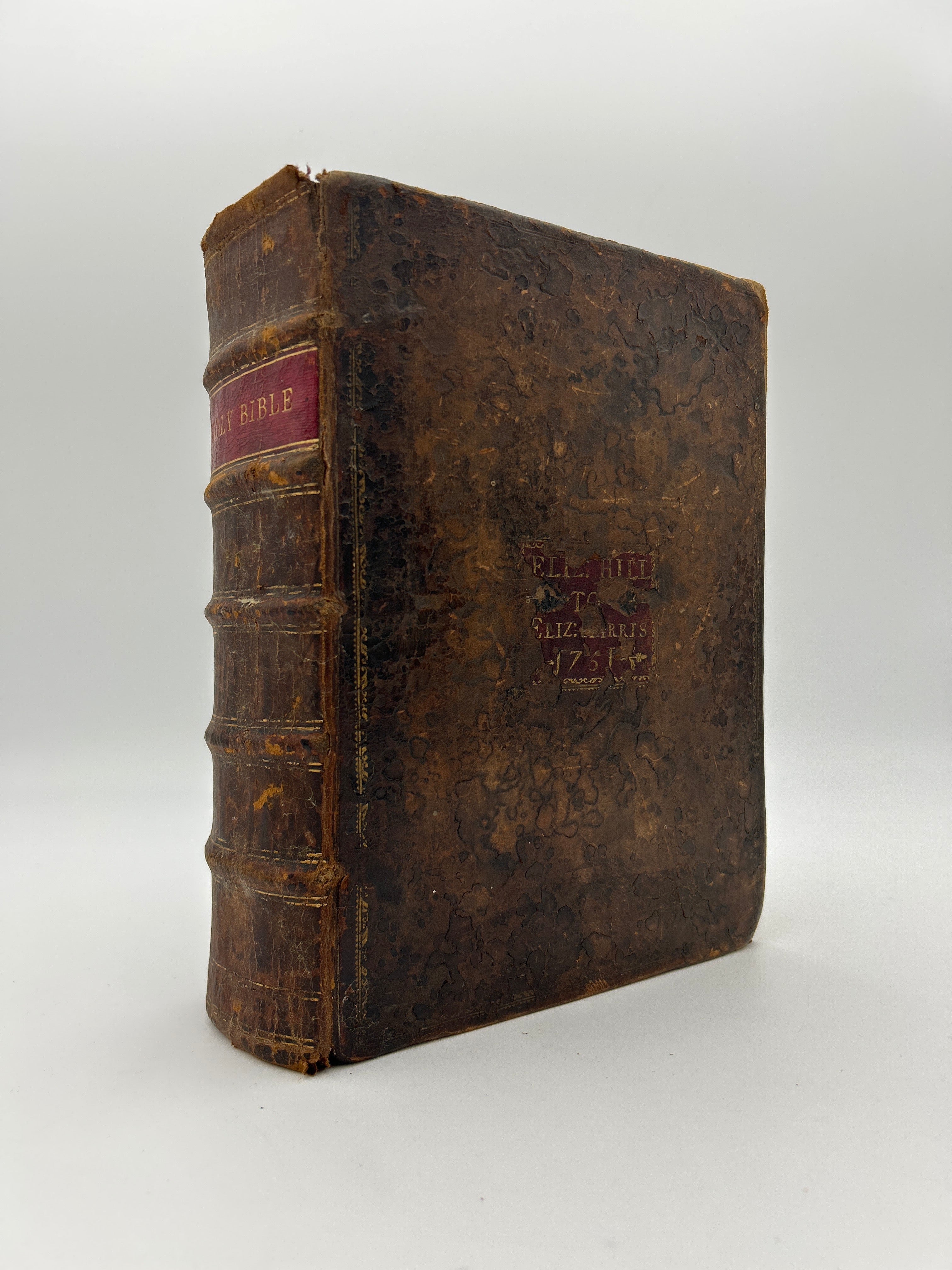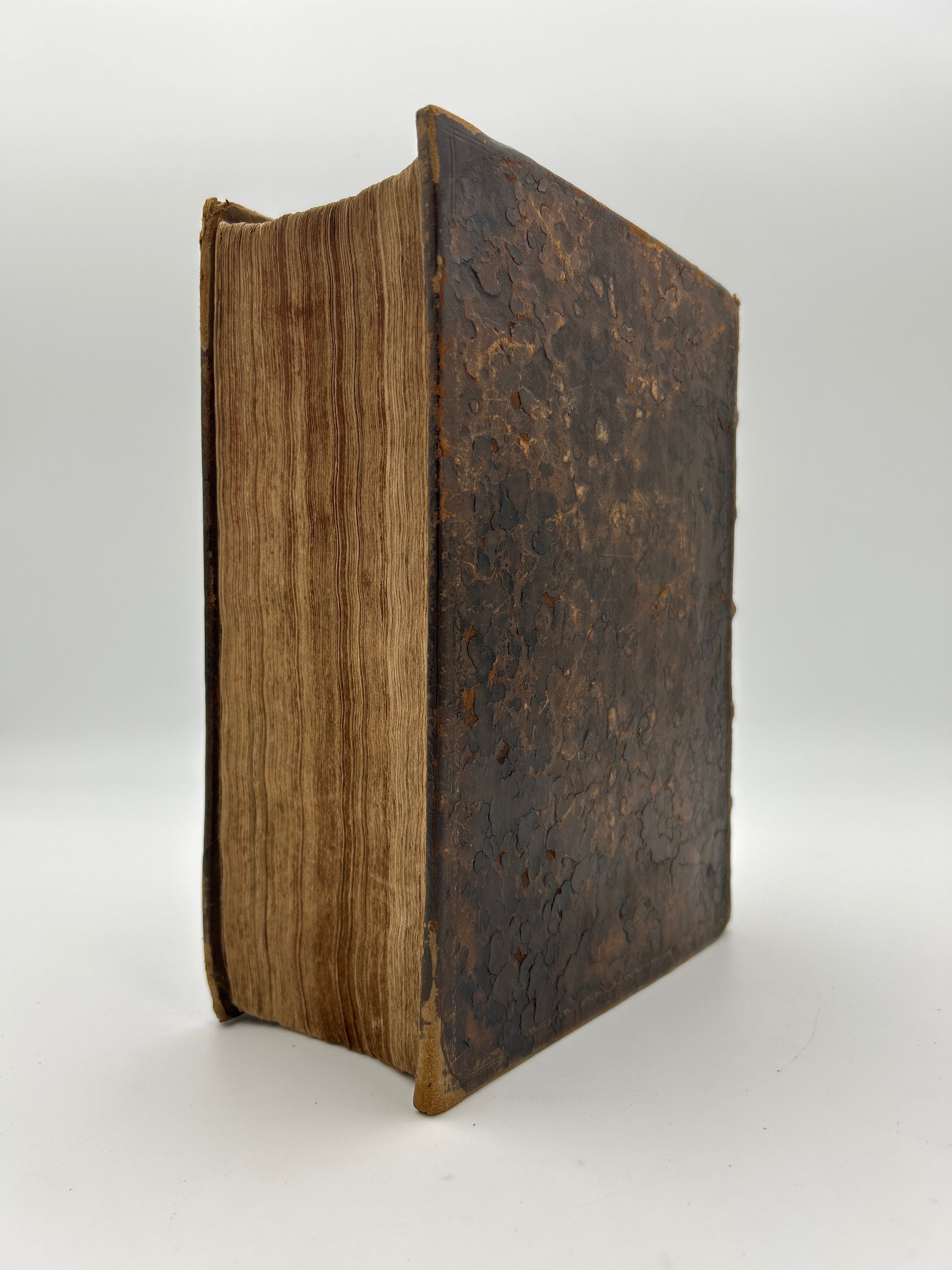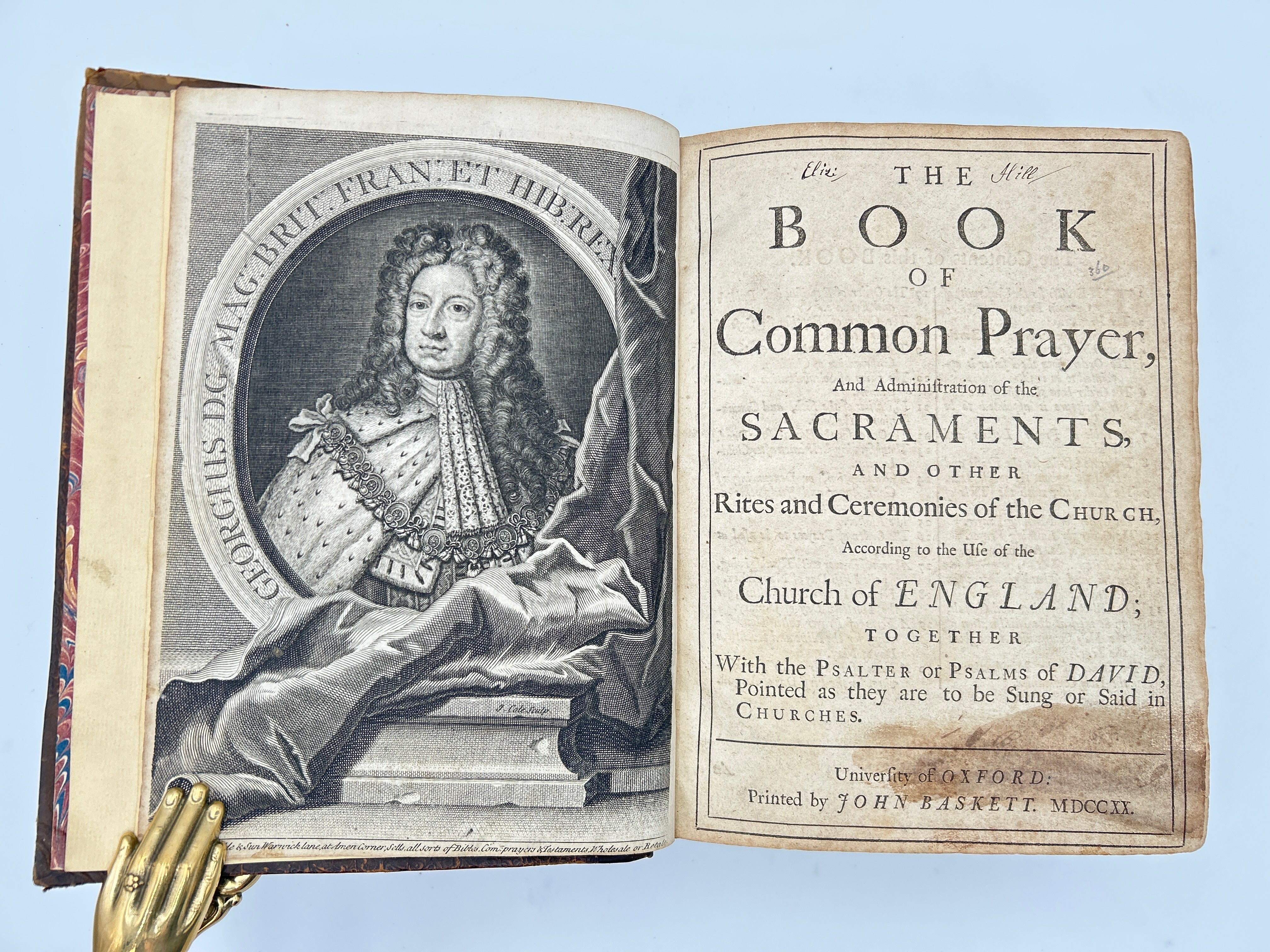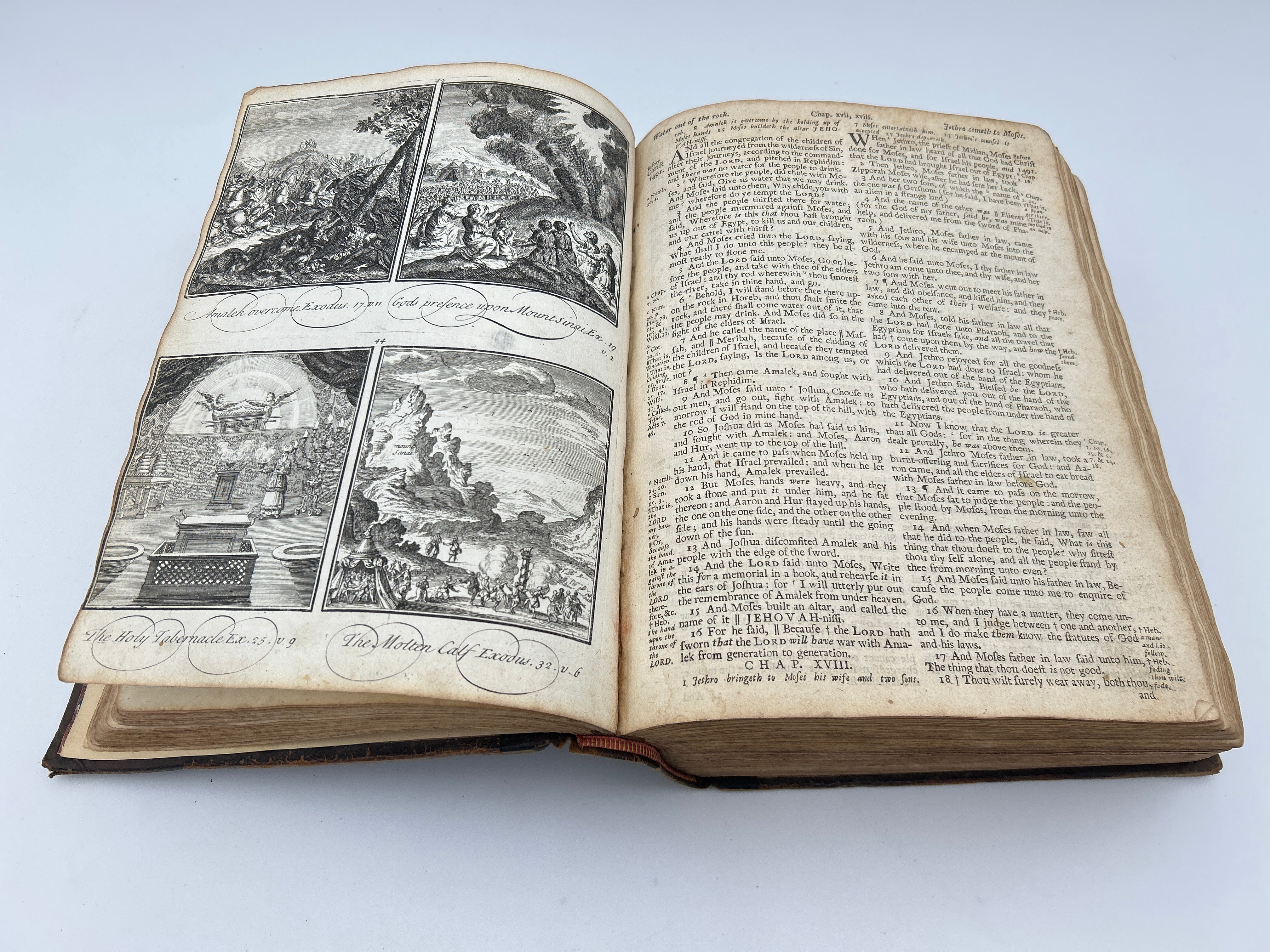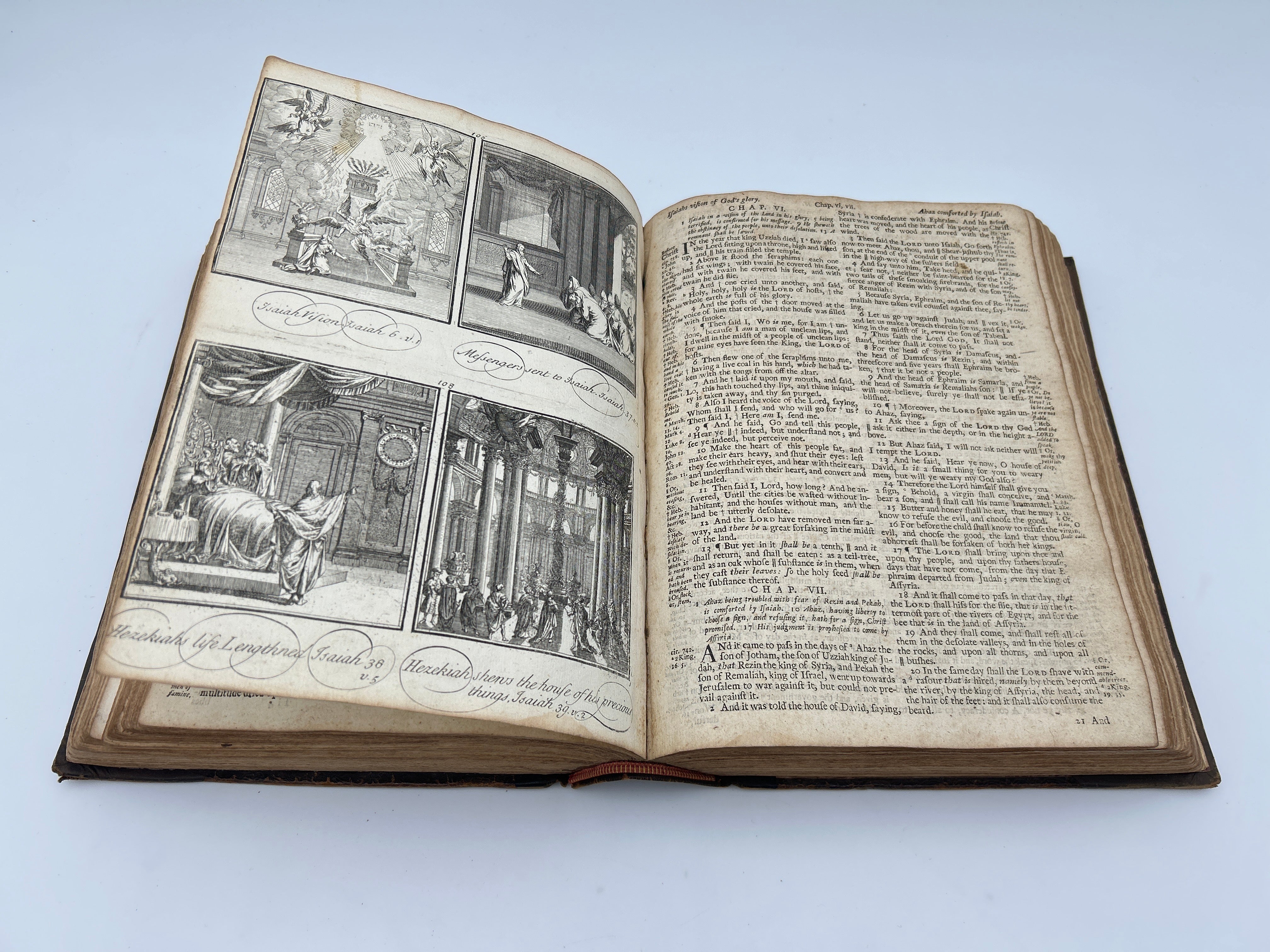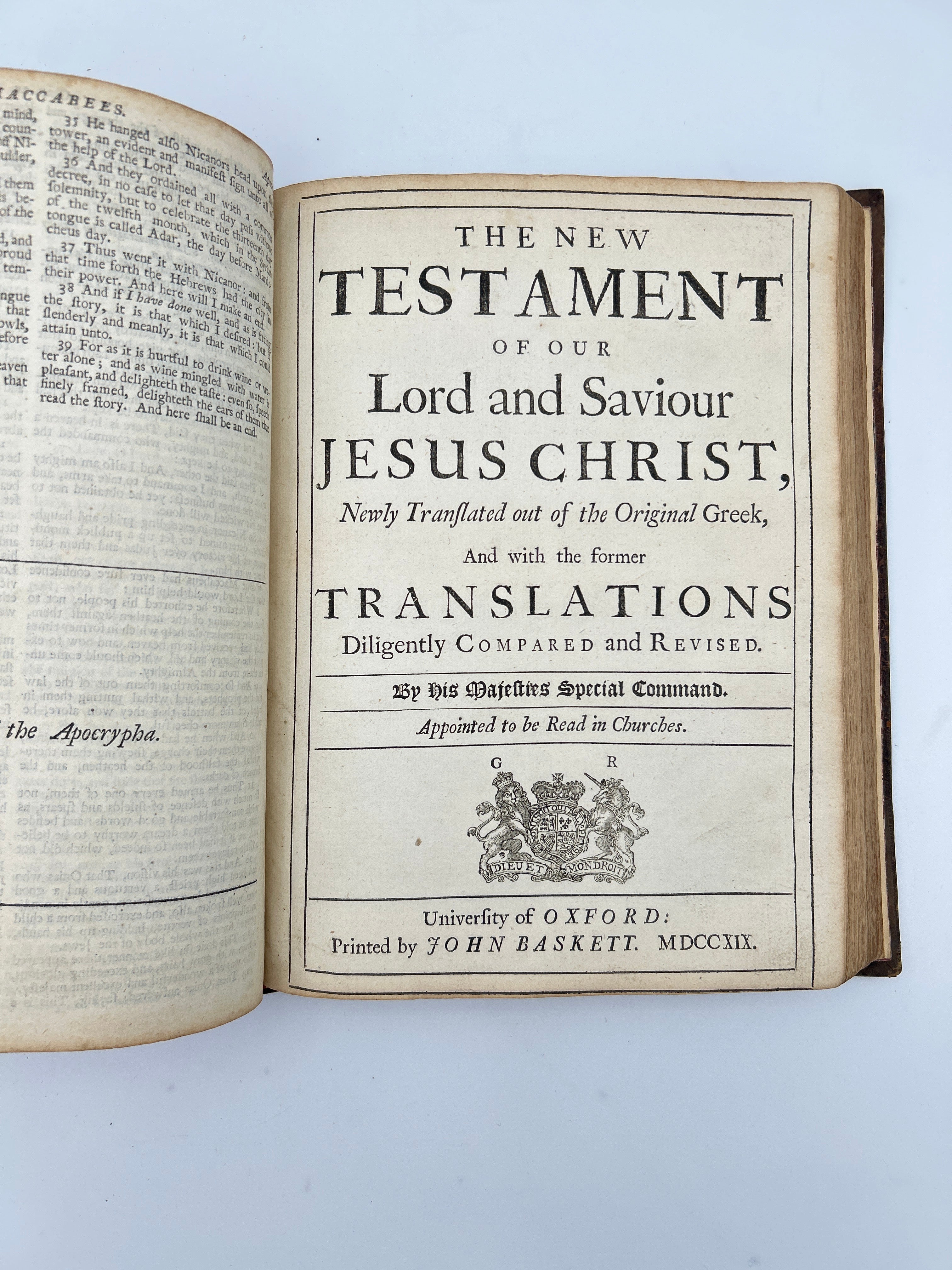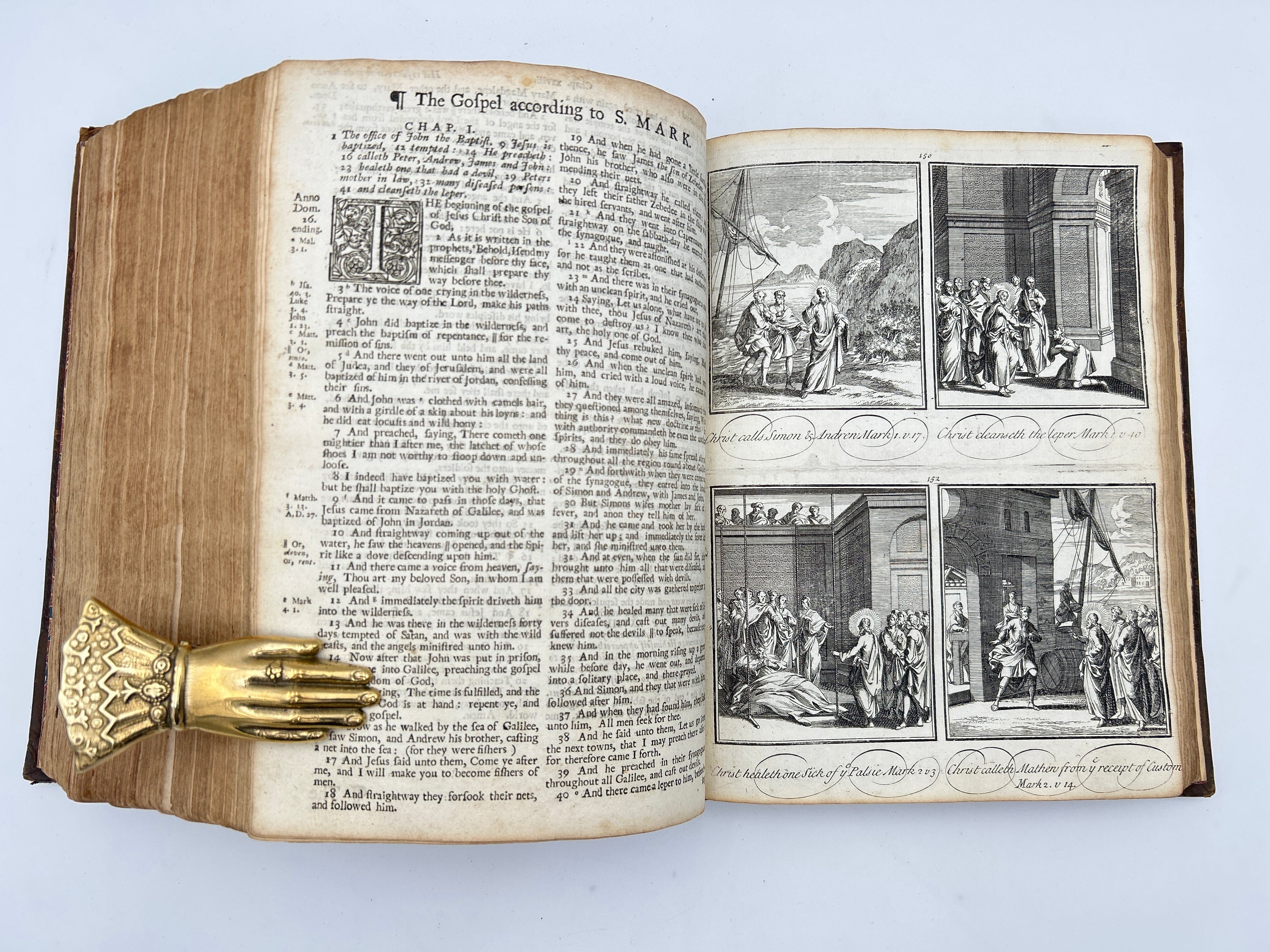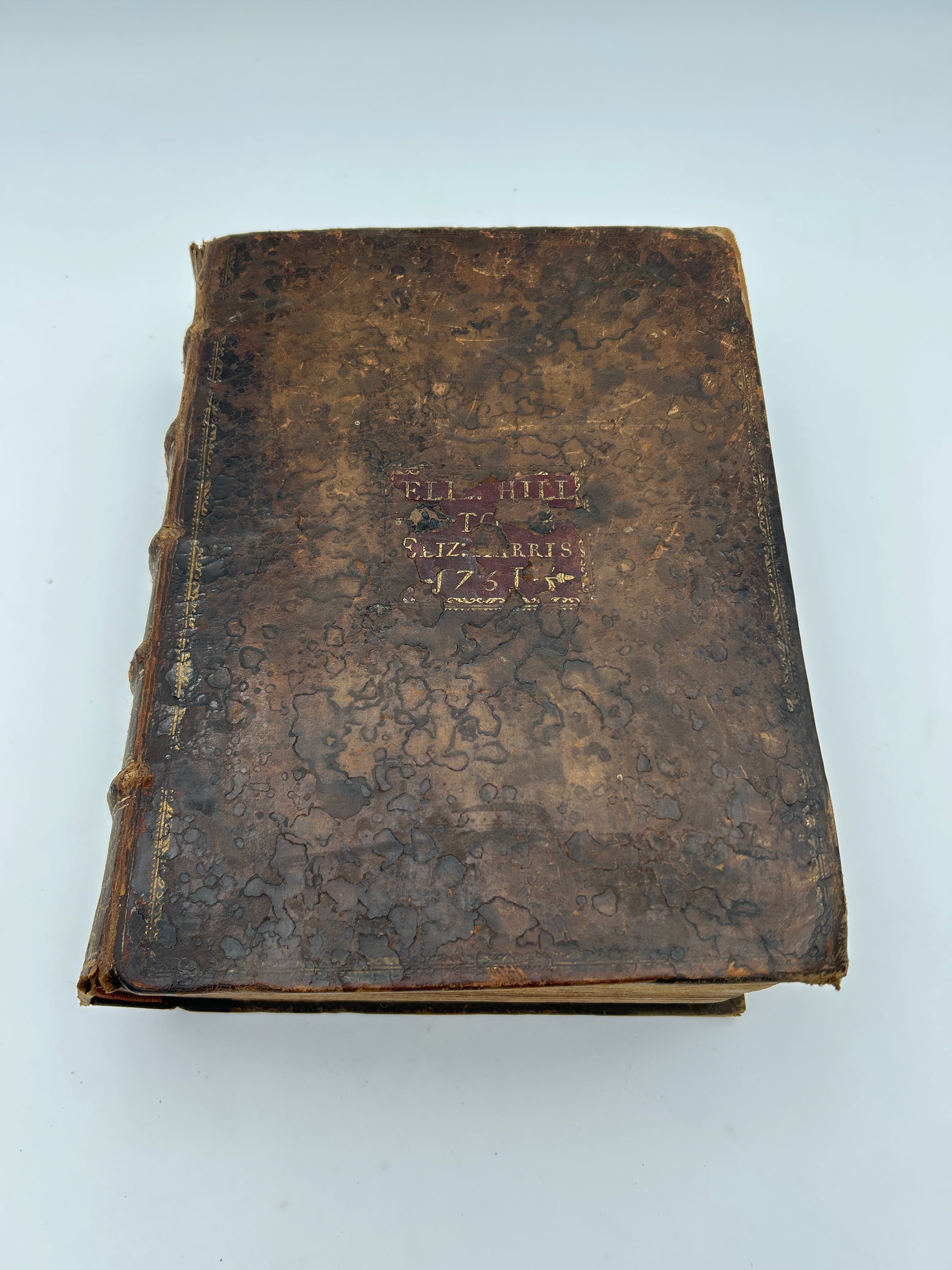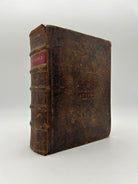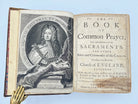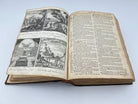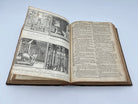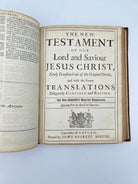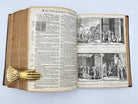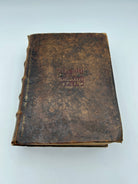Book of Common Prayer 1720 with the Holy Bible 1719
Couldn't load pickup availability
5B Printed by John Baskett, Oxford, 1720. And 1719.
Notes
The Book of Common Prayer (BCP) is a central text in Anglican worship and liturgy, first compiled in 1549 during the reign of King Edward VI of England. The book was designed to provide a common liturgical framework for the English-speaking church, standardizing prayers, rituals, and services for use across Anglican communities. It includes a variety of elements, such as prayers for daily worship, communion services (the Eucharist), baptism, marriage, and funerals. The prayers and liturgies are structured in a way that aims to be accessible to both clergy and laity, reflecting a blend of Catholic and Reformed traditions, while making worship in English more accessible to the people, as opposed to the previously used Latin texts.
Over the centuries, the Book of Common Prayer has undergone revisions, but it has retained its core structure and its profound influence on Christian worship, particularly in Anglican, Episcopal, and some Protestant denominations. Its language, especially in the 1662 revision, is often admired for its beauty and poetic nature. The BCP has played a significant role in shaping English religious practice and even had an impact on the development of the English language. The text continues to be a foundational resource in Christian liturgy, influencing not only public worship but also personal devotion and spirituality.
The printing history of the Bible is a crucial chapter in the development of printing and the dissemination of knowledge. The first major printed edition of the Bible was the Gutenberg Bible, printed around 1455 by Johannes Gutenberg in Mainz, Germany. This was the first substantial book printed with movable type, marking a turning point in both the history of the Bible and of printing. The Gutenberg Bible was produced in Latin, based on the Vulgate translation, and its mass production made the Bible more accessible, although it was still limited to the elite due to its high cost.
Description
Size: 9 3/4 x 7 1/2 x 3 inches
Original leather covered boards. Five raised bands with red leather label in the second compartment with gilt lettering. Chipped away remnants of a red leather label on the upper board with gilt lettering. Gilt embossed boarders around the boards. Marbled endpapers. Many etchings and wood cuts throughout. Fully intact. Significant wear to the leather boards with bumped corners and rubbing to the extremities. Minimal fraying to upper and lower spine. General browning to interior. Very good condition overall.
